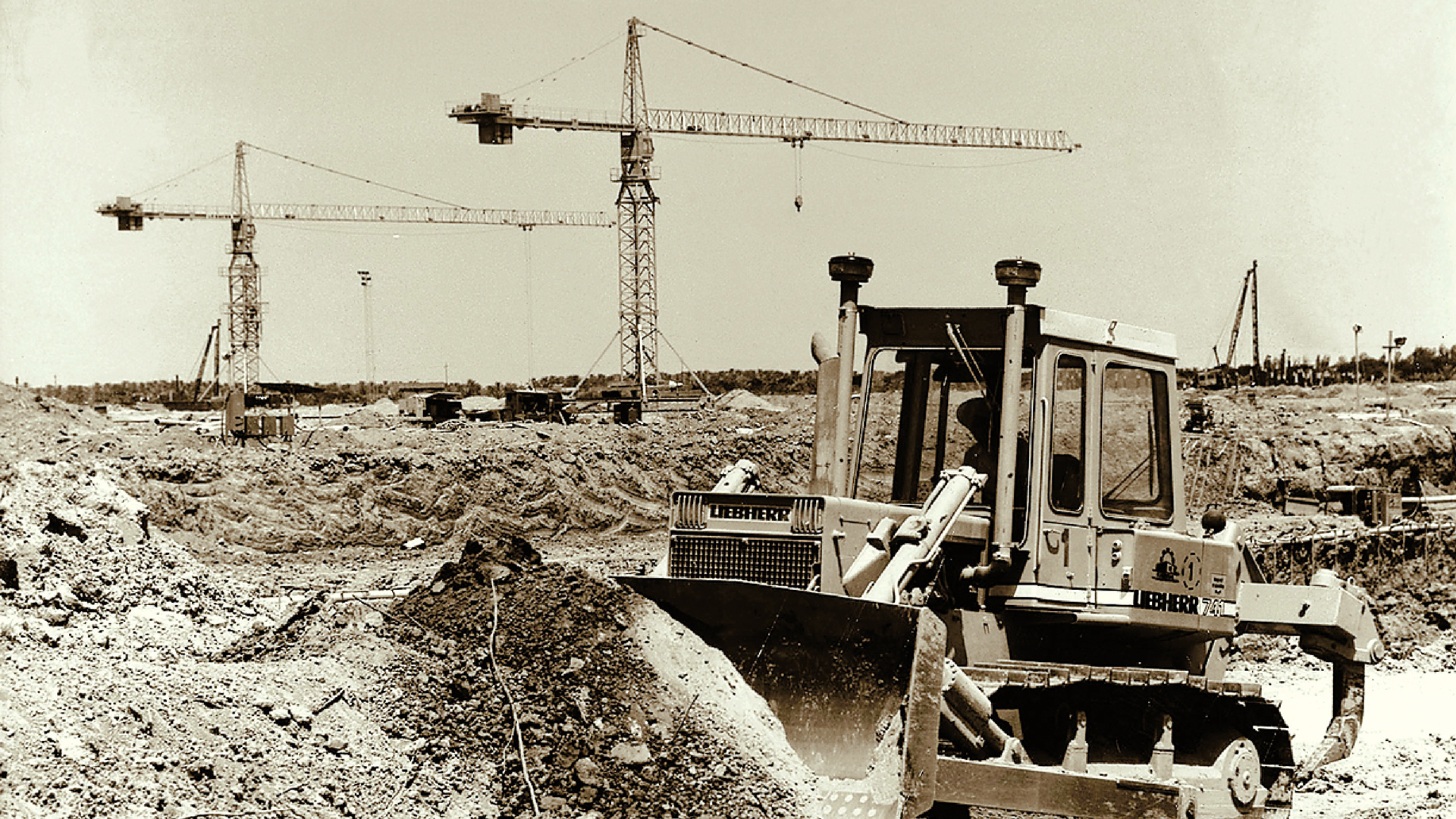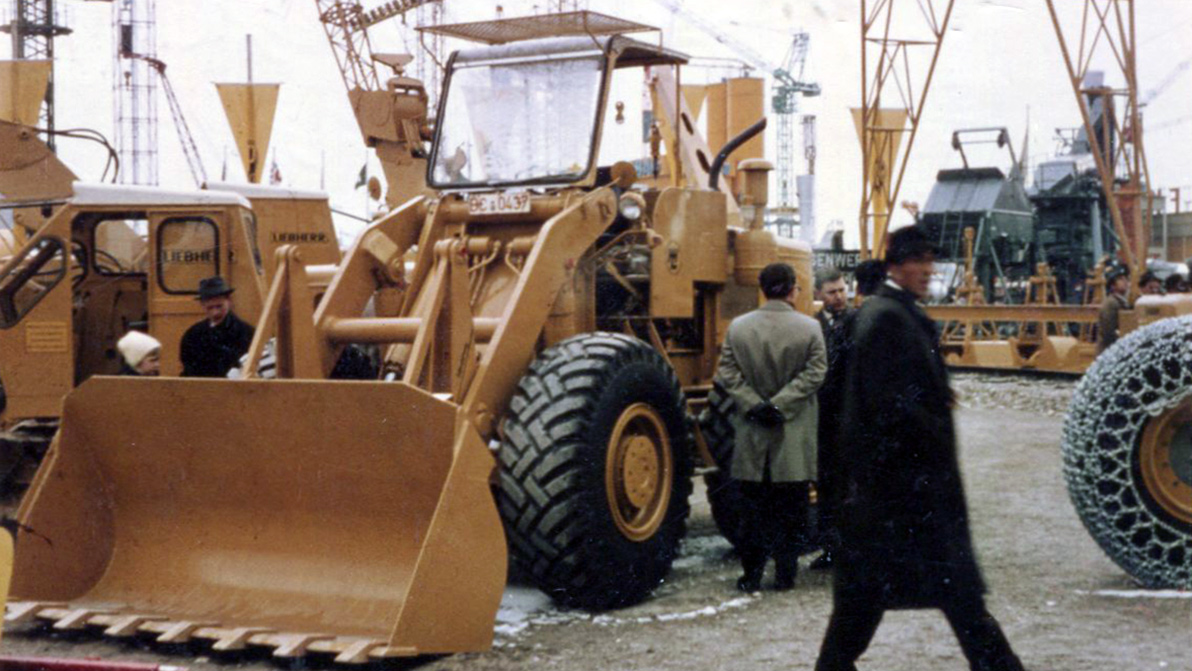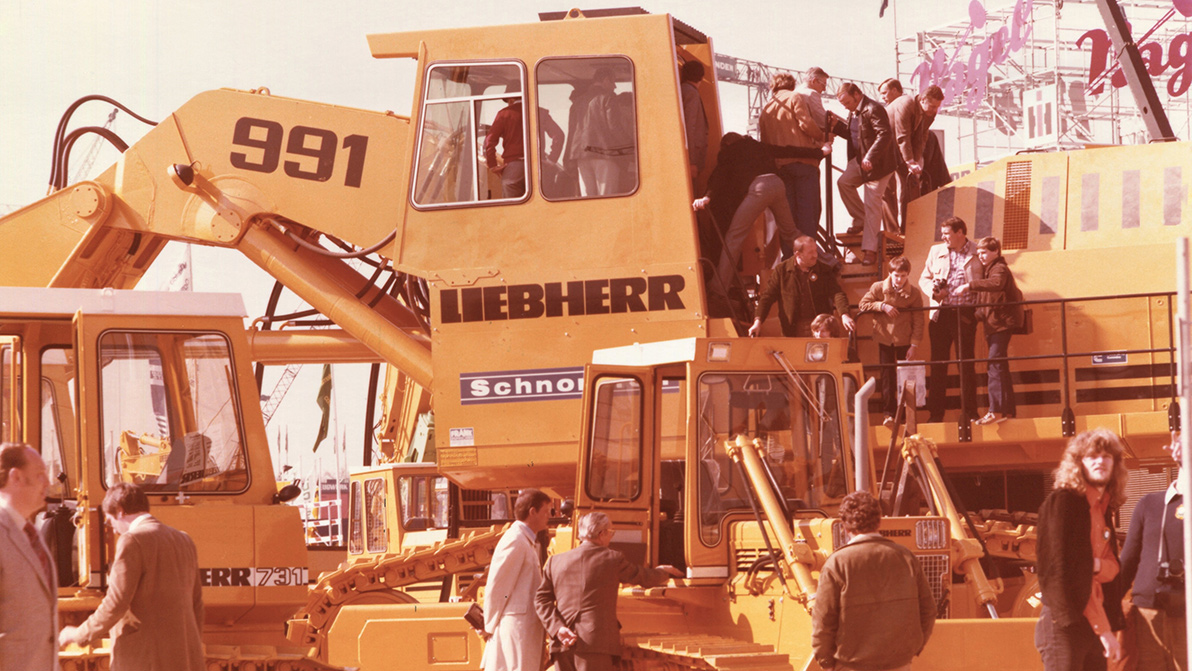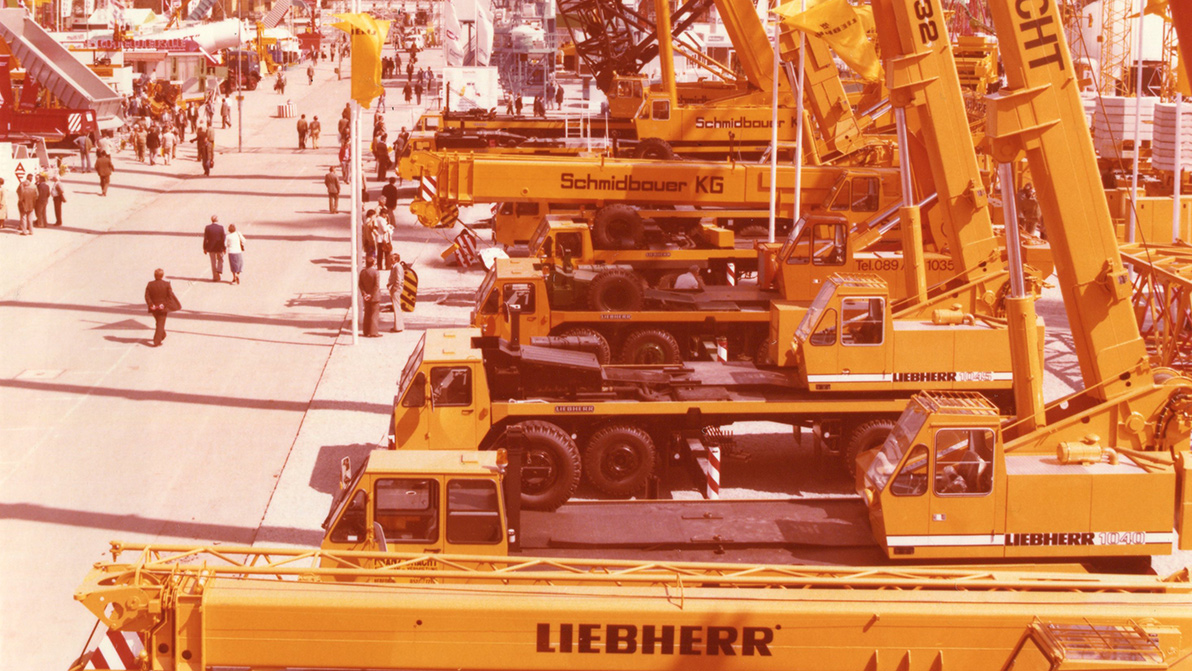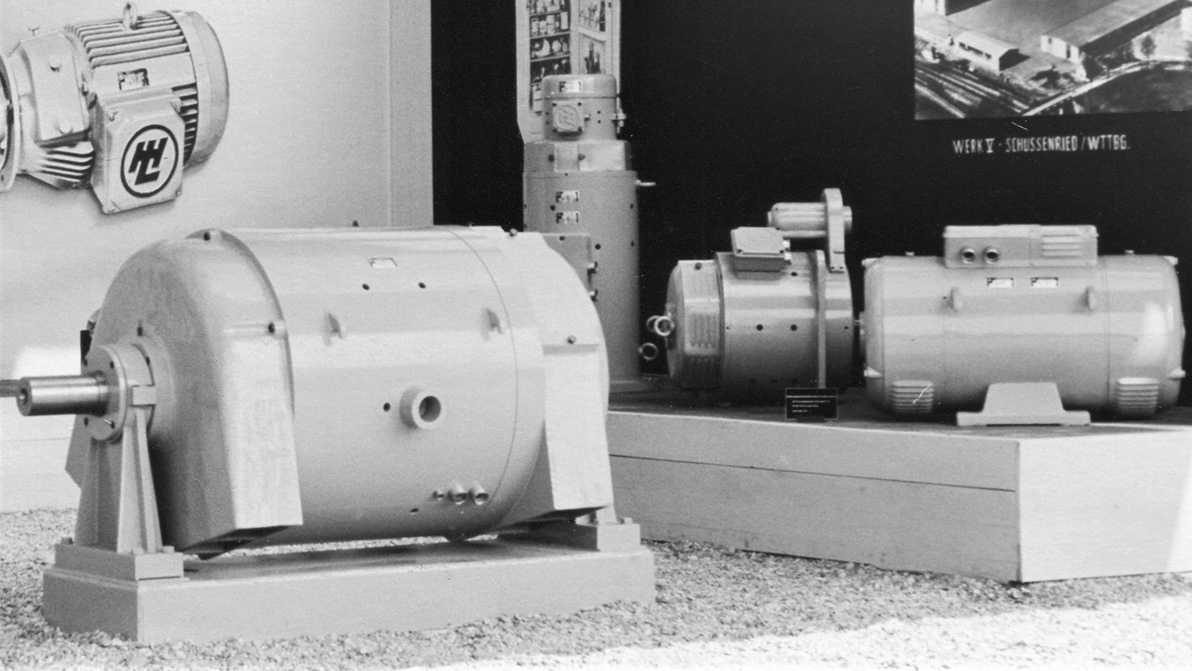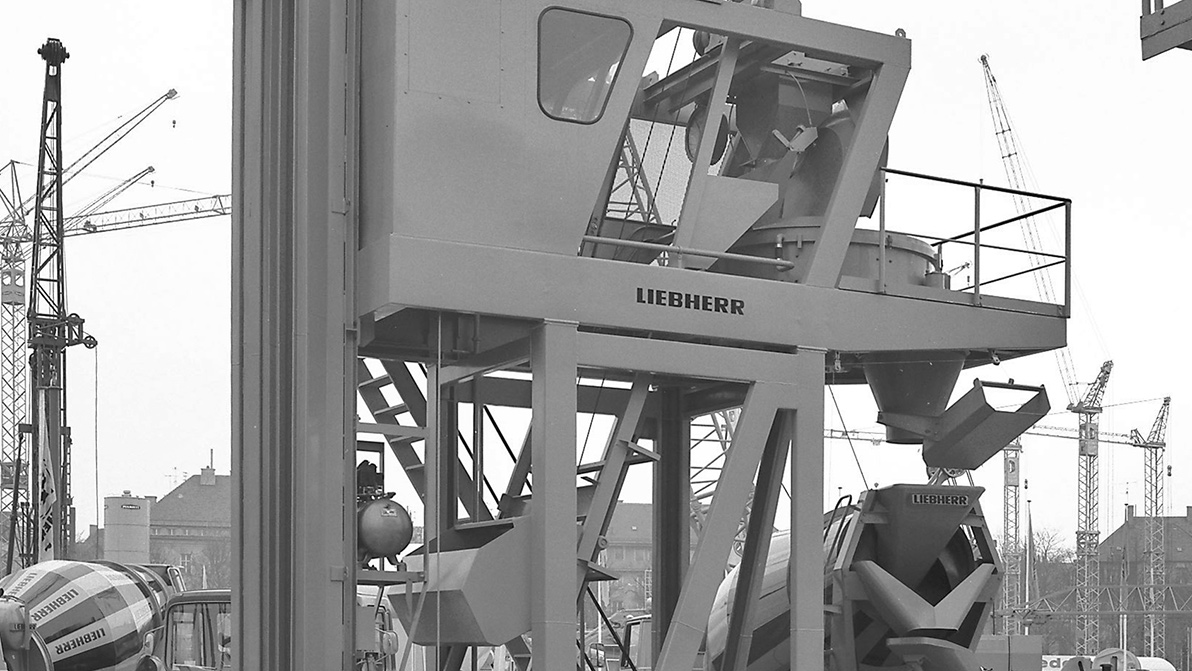We can only be satisfied when our customers are satisfied too.
Back to the roots
In 1949, Hans Liebherr presented his first mobile tower crane at the Frankfurt Autumn Trade Fair – but the presentation was quite a disappointment for the company founder. “After the exhibition, I could have actually stopped my crane production,” he commented. Instead of giving up, Hans Liebherr fought his way through, and thanks to his determination and entrepreneurship, turned what was then still a small construction company into a leading global manufacturer that helped shape technological progress in many industries. All his perseverance has paid off. At the Bauma in 1956, Liebherr was already able to exhibit other machines, including Europe’s first hydraulic excavator, a wide range of construction cranes as well as products from the area of concrete technology. This Bauma marked the beginning of a success story. Over the years, 30 more Baumas followed with visitors from all over the world. At first, the exhibition received around 8,000 visitors. Today there are almost 80 times as many. And Liebherr’s exhibition booth has also grown steadily.
With his down-to-earth manner, Hans Liebherr always took great interest in the needs of his customers. We have upheld this principle to this day, and will continue to embody it in the future, in line with the motto of our company founder:
A journey through time over the Bauma years
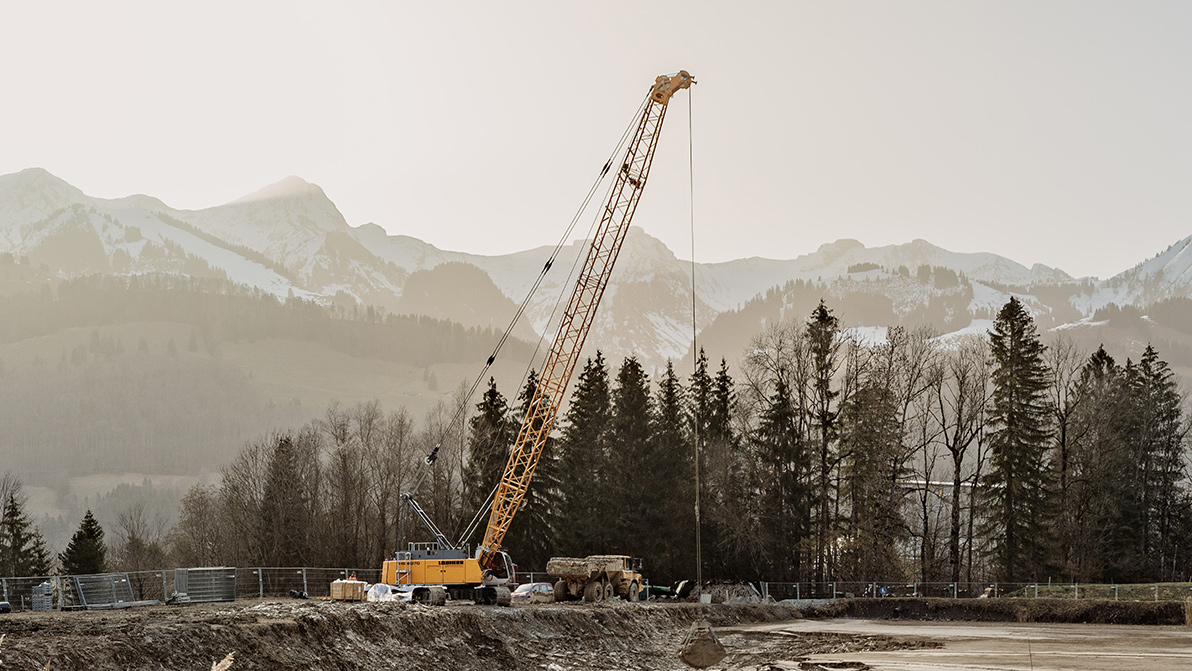
Trend-setting prototype
Everything started back then with serial number 181001. In 1979, it was assigned to the prototype of Liebherr’s first duty cycle crawler crane, the forefather of Nenzing’s construction machines production. Previously, only ship cranes had been built there. The operating weight of the excavator was 80 t and the dragline bucket could hold up to 3.5 m³ of material. In dragline operation, the boom had a maximum length of 30 m. This first model was in daily use for four decades. Over the next decades, the HS 870 was followed by a large number of construction machines from Nenzing. In 2020, 40 years after the first duty cycle crawler crane was built, Liebherr unveiled the new, state-of-the-art HS 8070.1 with an operating weight of 72 t. The boom length is 29 m (in dragline mode) and the dragline bucket has a capacity of 3.8 m³. The compact machine has a lifting capacity of 70 t and is the first choice for a broad range of applications, including material handling, deep foundation and lifting work. It represents the all-round qualities of Liebherr’s HS series and features improved safety, simple operation and superb driver comfort.
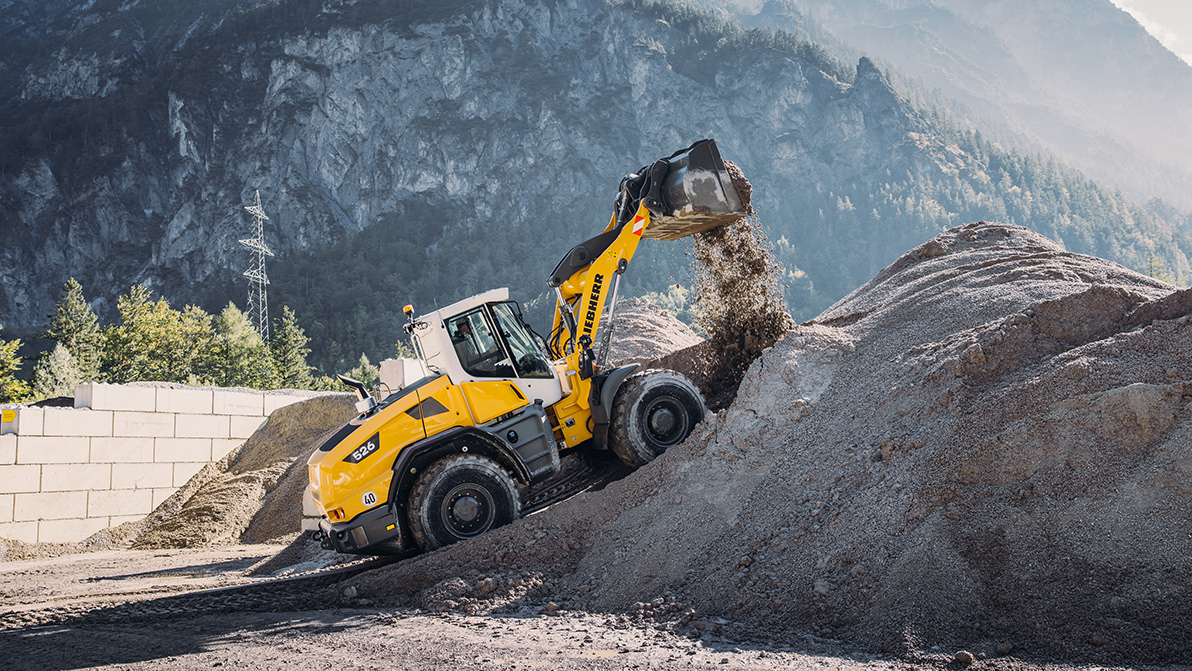
Start of a success story
The first two Liebherr wheel loaders were built in the 1950s, but still had some “teething problems”at that time. By contrast, the third Liebherr wheel loader, which was developed and built from 1962, was robust and reliable. With a weight of approximately 10 t, the LSL 1500 had a 108 hp diesel engine and a bucket volume of 1.5 m³. In its day, this wheel loader was a stateof-the-art, technical milestone and was exhibited at Bauma 1963.
Since then, standards have changed. The L 526 is a representative of the new 8th generation of medium-sized wheel loaders. Its dimensions are similar to those of the historic LSL 1500, but it outscores the older model by far with its excellent performance and state-of-the-art technology. This includes, for example, the new lift arm featuring a z-bar linkage, the comfortable operator’s cab and innovative assistance systems such as active personnel detection and a brake assistant.
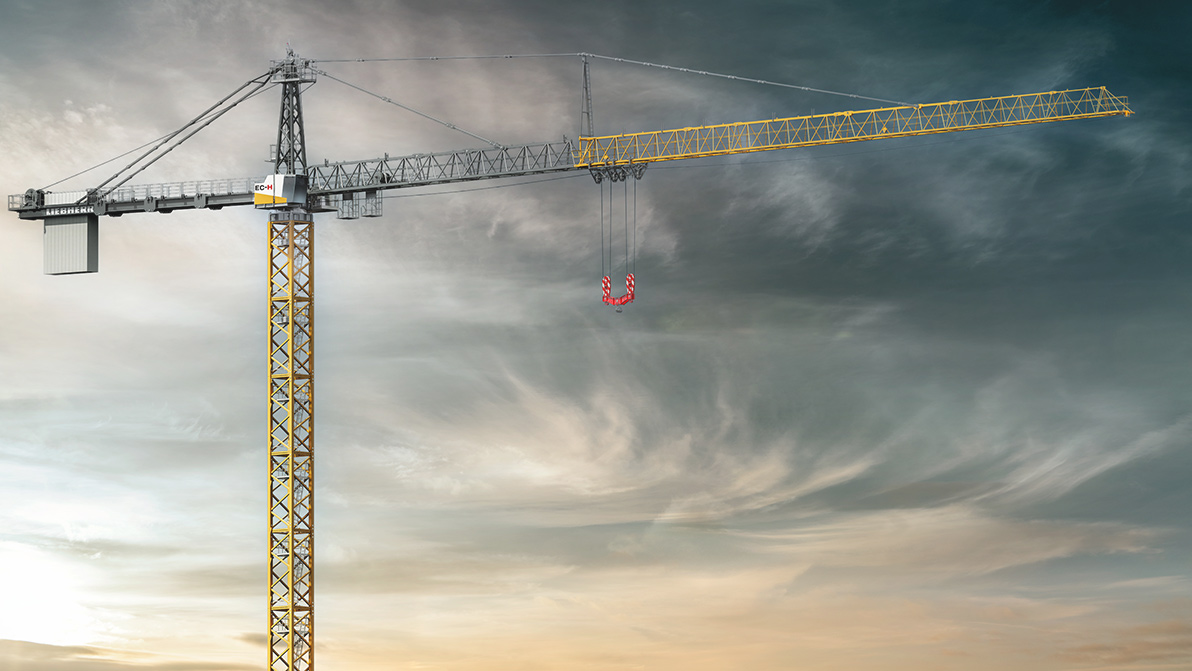
Aiming high
As we know, everything at Liebherr started with cranes. In 1949, Hans Liebherr invented Europe’s first mobile tower crane, laying the foundation for the company’s decades-long success story. At Bauma 1969, Liebherr presented several successor models, including the then newly released 50 HC, the first representative of the still extremely successful HC series.
A lot has happened since Bauma 1969. For example, fibre rope technology has found its way into Liebherr top-slewing cranes. At Bauma 2022, Liebherr will be presenting a new large crane, the 1188 EC-H 40 Fibre, which features an outstanding jib head lifting capacity. It is the first high-top crane to be fitted with high-tensile fibre rope and is Liebherr’s most powerful series production crane currently available.
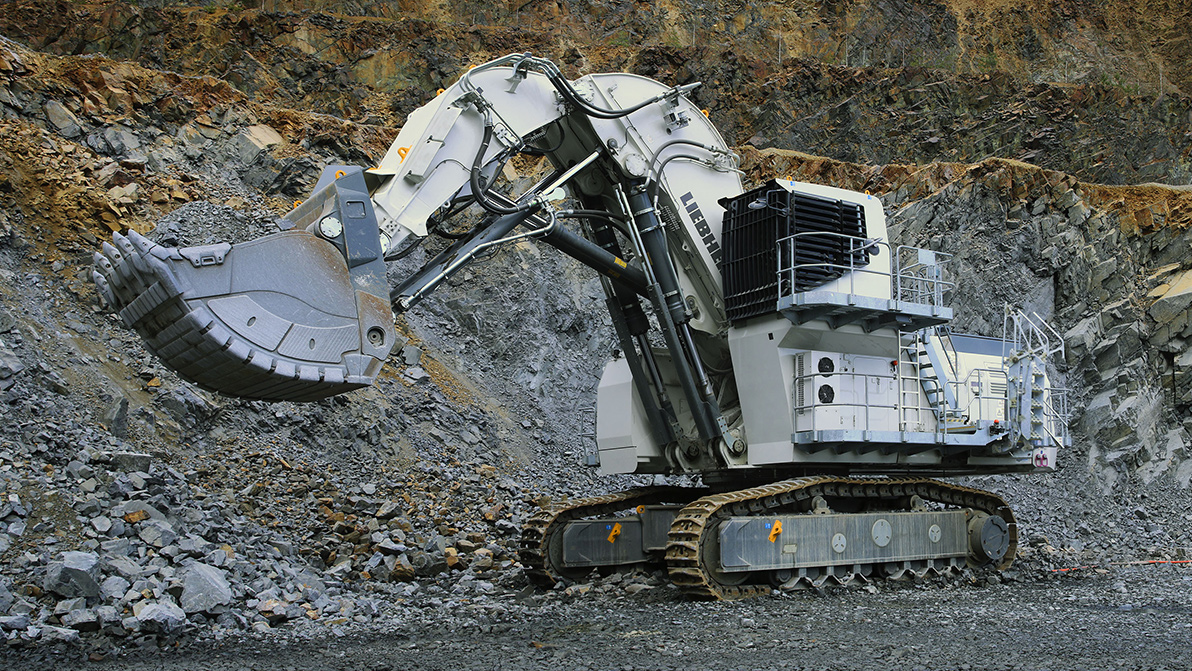
Heavyweight champions
The Liebherr R 991 was a 160-tonne excavator that was introduced in 1976, only two years after the production of Liebherr’s very first mining excavator, which had an operating weight of merely 66 t. The R 991 ran on two 6-cylinder diesel engines. The excavator’s bucket had a capacity of 4.50–5.50 m³ in backhoe bucket configuration.
Decades later, Liebherr introduced the R 9200, a mining excavator with an operating weight of 205 t. It was first unveiled at Bauma 2016. The bucket has a capacity of 12.50 m³ in both backhoe and bottom dump shovel configuration, meaning its size has doubled in comparison to the R 991, while the operating weight is almost equal. The R 9200 comes with a powerful 810 kW engine but is also available with an electric motor. Its many assistance systems and advanced technologies make it a state-of-the-art mining excavator. The R 9200 is designed to match mining trucks with payloads of up to 140 t and is fitted with the Liebherr advanced bucket and GET solution. It can also be equipped with the Bucket Filling and Truck Loading Assistants and provides service staff with on-board diagnostics, giving them an overview of performance, operating time, and fuel efficiency.
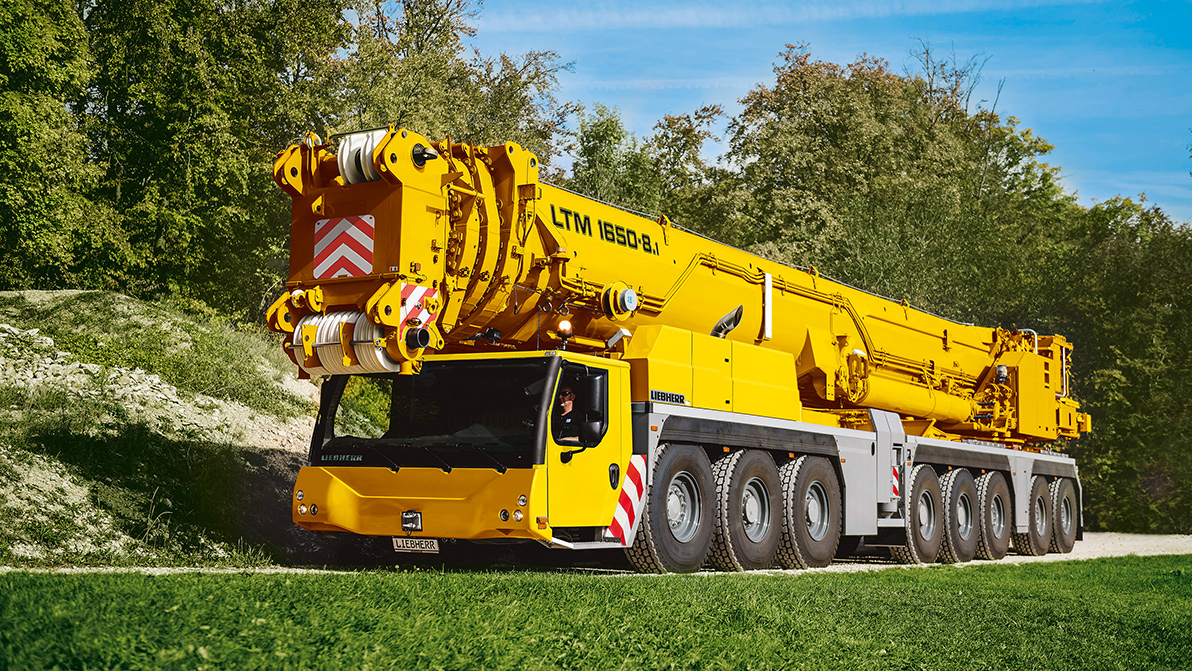
Mobile worldwide
In 1980, the LT 1200, the most powerful Liebherr telescopic crane at the time, came onto the market with a maximum lifting capacity of 200 t. In addition, it had a 55-metre telescopic boom and could achieve lifting heights of up to 92 m with a lattice jib.
At the time, the LT road crane series was being converted into all-terrain LTM cranes, as LT cranes were able to operate on the road, but less well in construction site terrain – the turning radii were too large and the tyres too small. All this is now a thing of the past. Today’s most powerful 8-axle, the LTM 1650-8.1, has a maximum lifting capacity of 700 t and is ideally equipped for driving on almost any terrain. Its telescopic boom is optionally 54 or 80 m long and can achieve a lifting height of 152 m with lattice extensions.
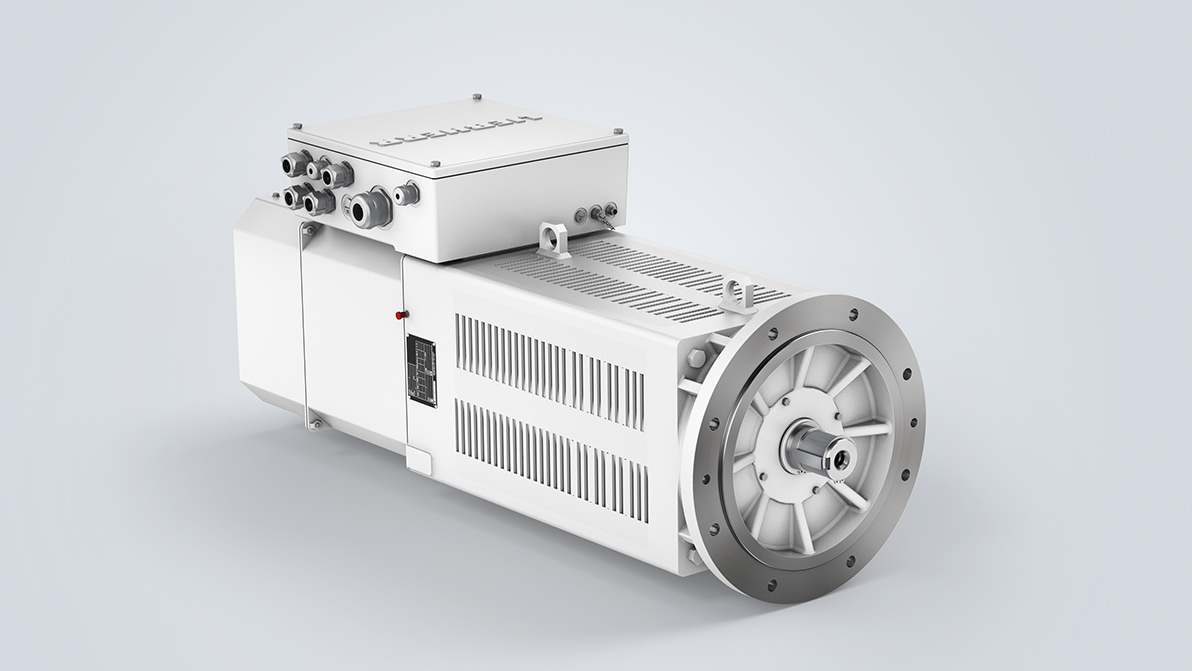
Everything runs smoothly
The Liebherr electric machine was presented at an exhibition for the first time in 1958. This special machine was used in dredgers and had an output of 140 kW.
Today’s electric motors from Liebherr require a significantly smaller installation space while maintaining the same power. Increases in performance and effectiveness have been achieved over the decades with more efficient materials and ever better manufacturing methods. Optimised insulation systems and resins as well as winding and cooling methods ensure that the motors are far more heat-resistant, for example. Liebherr’s current squirrel cage motors are high-performance machines (7.5 to 160 kW) for use in construction machines, ship and harbour cranes as well as other applications.
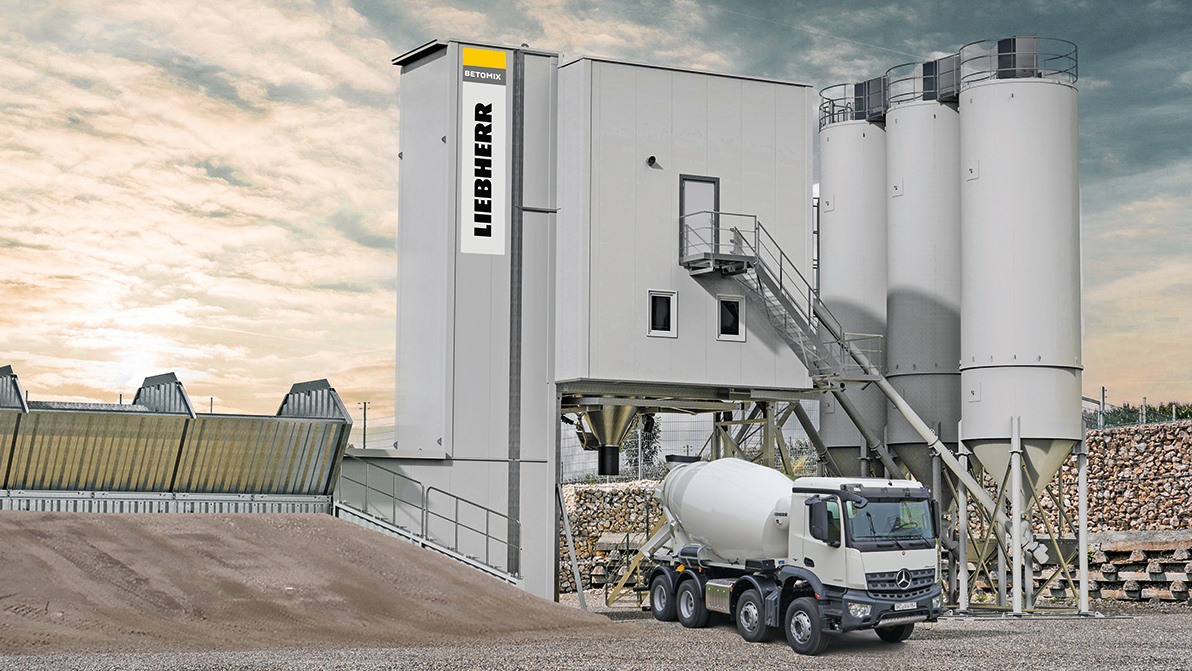
The mixture makes the difference
A Betomix 30 in star silo design was exhibited on the Liebherr exhibition booth at Bauma 1969 on the Theresienwiese in Munich. It was showcased to the public for the first time as a novelty. The truck mixers of the first generation (HTM 601/701, recognizable by the angular feed hopper) were also presented to the world here for the first time, as production of the truck mixers began in 1967/68.
Continuous further development has made Liebherr’s mixing plants more and more innovative and efficient. In 2022, the new edition of the Betomix 2.5 will be on show at Bauma. The modular structure of the new Betomix and Mobilmix mixing plant series allows them to be optimally adapted to all customer requirements. Transport and assembly are quick and easy, and a wide range of optional accessories can be integrated without additional expense.

